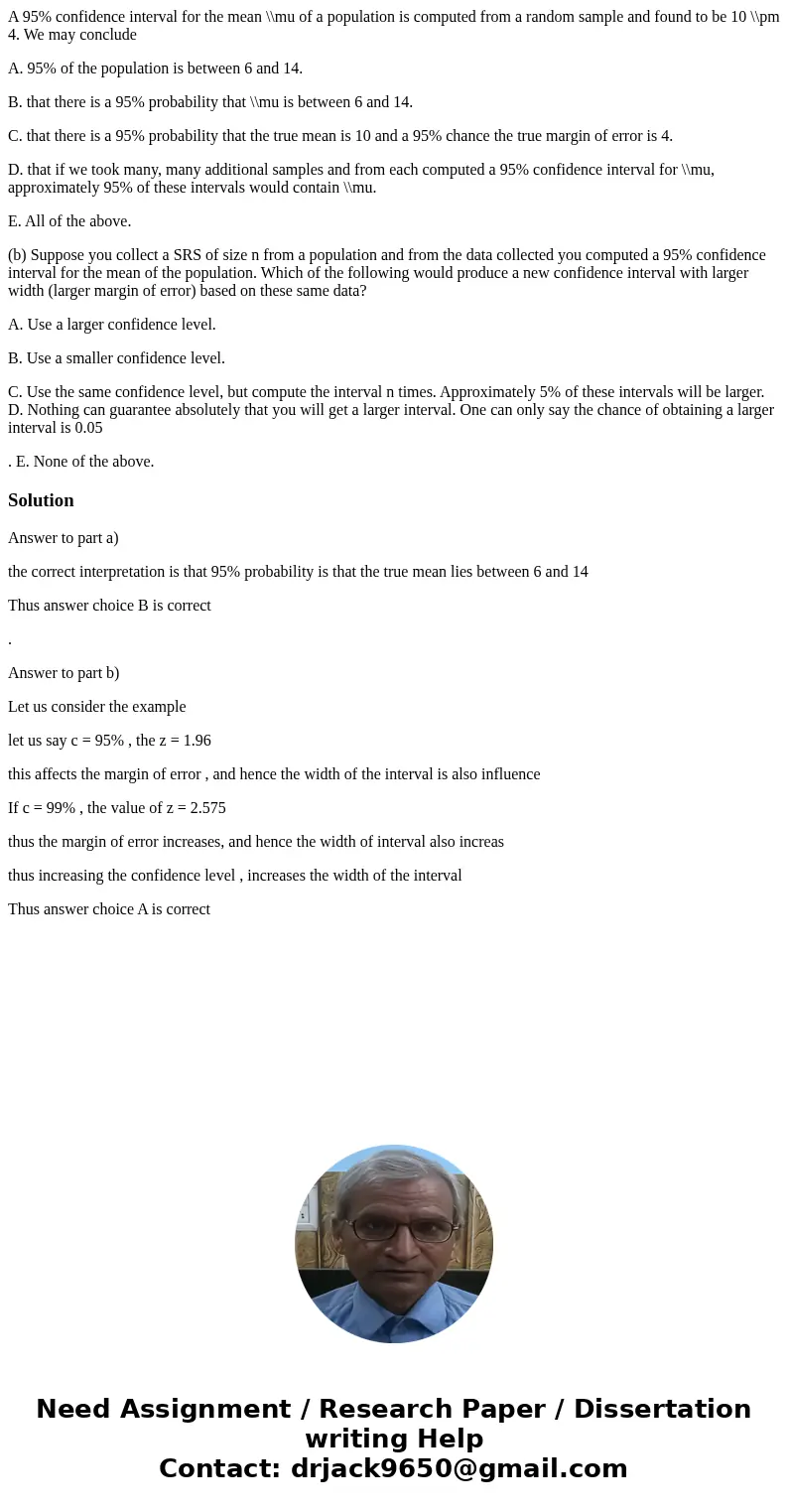A 95 confidence interval for the mean mu of a population is
A 95% confidence interval for the mean \\mu of a population is computed from a random sample and found to be 10 \\pm 4. We may conclude
A. 95% of the population is between 6 and 14.
B. that there is a 95% probability that \\mu is between 6 and 14.
C. that there is a 95% probability that the true mean is 10 and a 95% chance the true margin of error is 4.
D. that if we took many, many additional samples and from each computed a 95% confidence interval for \\mu, approximately 95% of these intervals would contain \\mu.
E. All of the above.
(b) Suppose you collect a SRS of size n from a population and from the data collected you computed a 95% confidence interval for the mean of the population. Which of the following would produce a new confidence interval with larger width (larger margin of error) based on these same data?
A. Use a larger confidence level.
B. Use a smaller confidence level.
C. Use the same confidence level, but compute the interval n times. Approximately 5% of these intervals will be larger. D. Nothing can guarantee absolutely that you will get a larger interval. One can only say the chance of obtaining a larger interval is 0.05
. E. None of the above.
Solution
Answer to part a)
the correct interpretation is that 95% probability is that the true mean lies between 6 and 14
Thus answer choice B is correct
.
Answer to part b)
Let us consider the example
let us say c = 95% , the z = 1.96
this affects the margin of error , and hence the width of the interval is also influence
If c = 99% , the value of z = 2.575
thus the margin of error increases, and hence the width of interval also increas
thus increasing the confidence level , increases the width of the interval
Thus answer choice A is correct

 Homework Sourse
Homework Sourse